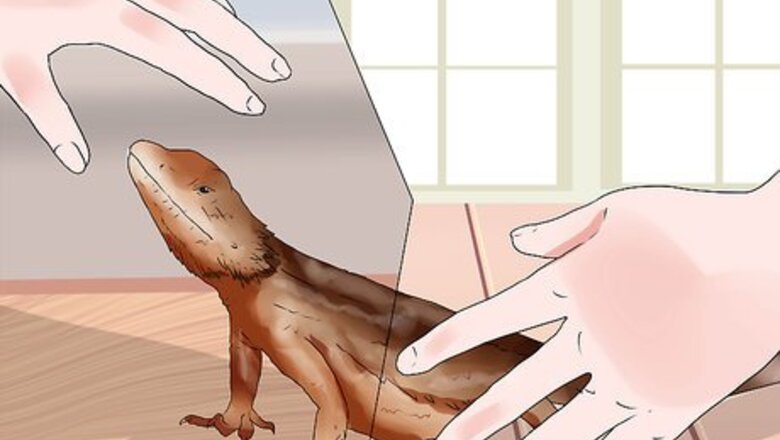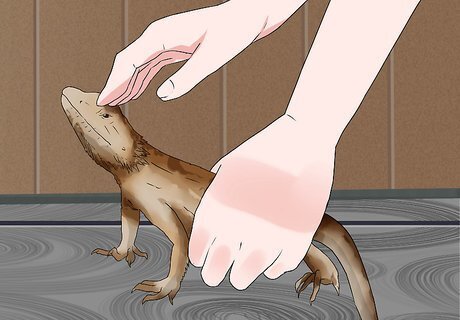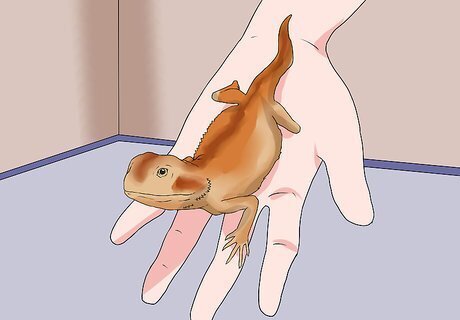
views
Handling Your Bearded Dragon

Be calm when approaching the bearded dragon. Talk in a low gentle voice. When you attempt to capture it, bring your hand in from the side, not from the top. A top hand approach will scare the dragon, as this is like a predator swooping over its head. There is no doubt that the dragon will run from you when you are trying to catch it, no matter what you do, but gently scoop it up.

Avoid getting bitten. Keep in mind that a bearded dragon has powerful jaws designed for crushing tough food. The bearded dragon will probably try to bite you, so keep its head between your fingers so it can’t turn to bite you. You may want to keep the first few handling sessions inside the cage so you don’t accidentally drop a squirmy dragon and lose it in the house. If you are unsure of the character of the bearded dragon you are picking up, you may want to wear gloves the first time you pick it up. While a bearded dragon's jaws are capable of biting down to the bone of a finger, keep in mind that bearded dragons are not inherently aggressive animals. They would rather be left alone in peace than attack.

Don't pick up a bearded dragon when it is upset. One sign that a bearded dragon is cross is that it puffs up its beard and it turns black. Try to talk calmly to the bearded dragon until it calms down, which is indicated by the black color dissipating. Try giving the bearded dragon a treat to calm it down. This can channel the dragon's aggression onto something other than you.

Be persistent when holding the bearded dragon. You need to get your dragon used to handling, so gently holding onto it while it squirms is part of the process. Basically don’t let your bearded dragon escape when you are holding it, unless it gets very aggressive and tries to bite you. Ideally, you shouldn't let your bearded dragon down until it has stopped squirming. When you hold it, try stroking its head and talking softly to it. It will probably close its eyes and calm down.

Be gentle when setting the bearded dragon down. This is important to remember, even if it is squirming while you do. Do not drop it back into the cage. Rather put your hand on the cage bottom and let it go on the ground. Make all your moves deliberate and calm, even when you are trying to catch your dragon.
Practicing Patience

Be patient. The taming process will take time. You need to get your bearded dragon used to you and you will also need to learn its habits and preferences.

Place the bearded dragon's cage in a central place in your home. Don't physically isolate the bearded dragon by sticking its cage in an unused portion of the house. While you don’t want to subject the bearded dragon to too much noise and activity, having it out where it can be a part of the household buzz will get it used to having humans around. Consider placing the cage in your living room if it is not to loud or busy. If your dining room is near the action of the house, but not constantly in chaos, then that might be a good location for your bearded dragon's cage.

Work on taming your bearded dragon every day. Set aside half an hour or more of time every day to handle your bearded dragon. This will help it get used to being handled. While you can break up training sessions into shorter 15 minute sections, make sure that you spend at minimum a half an hour a day handling your bearded dragon.
















Comments
0 comment